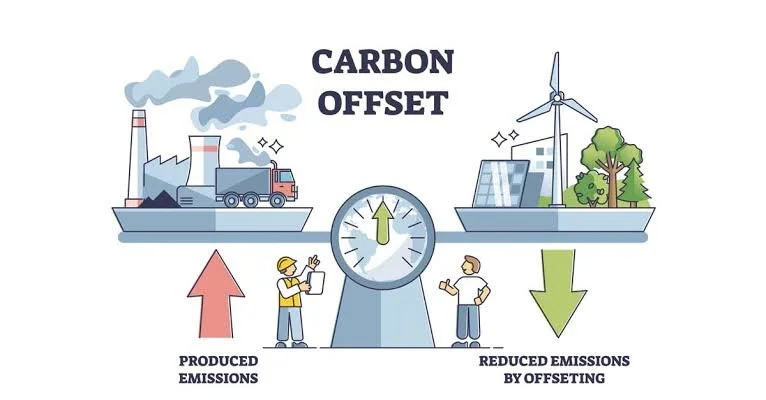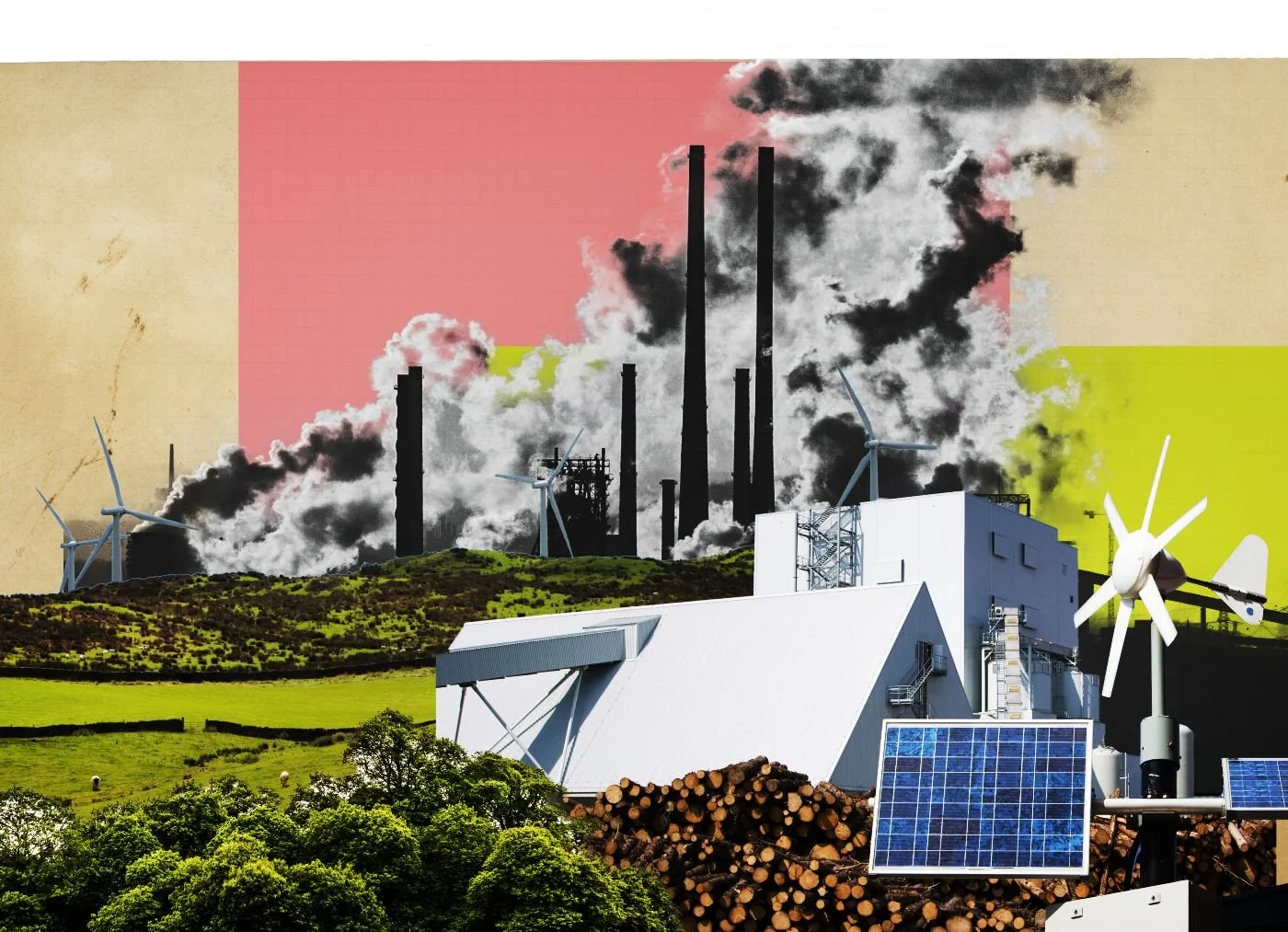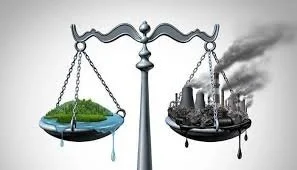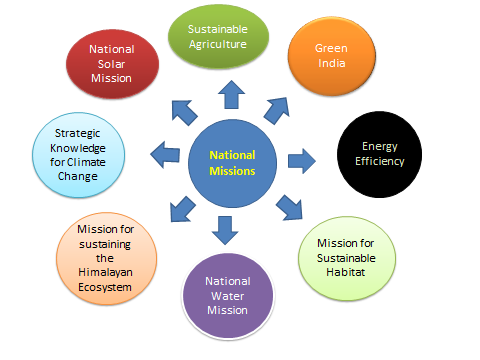Introduction
Climate change is a global crisis that demands urgent and collective action. As its impact continues to intensify, countries worldwide are grappling with the need to reduce greenhouse gas emissions and mitigate the effects of a warming planet. In this context, Nigeria, as one of the most populous and ecologically diverse countries in Africa, holds a unique position to contribute significantly to global climate action.
Nigeria, often called the "Giant of Africa," boasts of abundant natural resources and a rich biodiversity encompassing expansive forests, wetlands, grasslands, and coastlines. These diverse ecosystems play a crucial role in the global carbon cycle and have the potential to act as powerful carbon sinks, helping to mitigate the impacts of climate change.
In recent years, there has been growing recognition of the importance of carbon sequestration and offset projects in addressing the climate crisis. Nigeria's vast and diverse landscapes present a wealth of opportunities for carbon sequestration and offset initiatives. Reforestation and afforestation programs, which involve the planting of trees or restoring degraded forests, can enhance carbon sequestration capacity while simultaneously preserving biodiversity and ecosystem services. Likewise, sustainable agricultural practices, such as agroforestry, can contribute to carbon sequestration and offset goals, while improving soil health and promoting food security.
CARBON SEQUESTRATION
Carbon sequestration refers to the process of capturing and storing carbon dioxide, preventing it from entering the atmosphere and contributing to the greenhouse effect. This can be achieved through natural processes or technological advancements.
Natural Carbon Sequestration:
Natural carbon sequestration occurs through biological processes in ecosystems such as forests, wetlands, and oceans. Trees and plants absorb CO2 through photosynthesis, converting it into organic matter and releasing oxygen. Forests, in particular, are highly effective at sequestering carbon due to their large biomass. Wetlands, including marshes and mangroves, also sequester significant amounts of carbon through the accumulation of organic matter in their soils. Oceans act as carbon sinks by absorbing CO2 from the atmosphere and through the formation of calcium carbonate shells by marine organisms.
Technological Carbon Sequestration:
Technological carbon sequestration involves capturing CO2 from industrial processes and power generation and storing it underground or in other long-term storage solutions. Carbon capture and storage (CCS) technologies capture CO2 emissions at the source, compressing and transporting it to storage sites, such as depleted oil and gas fields or deep saline aquifers.
CARBON OFFSET PROJECTS
Carbon offset projects aim to compensate for greenhouse gas emissions by investing in activities that reduce emissions or remove CO2 from the atmosphere elsewhere. These projects help achieve carbon neutrality by balancing emissions with equivalent reductions or removals.
Renewable Energy Projects:
Investing in renewable energy projects, such as wind farms, solar power installations, or hydroelectric plants, can displace fossil fuel-based electricity generation and reduce CO2 emissions. These projects help transition to cleaner energy sources and contribute to sustainable development.
Afforestation and Reforestation:
Afforestation involves establishing forests in areas that previously lacked trees, while reforestation refers to restoring forests in areas that were previously deforested. Both activities enhance carbon sequestration by increasing the total biomass of trees and plants. They also provide additional benefits such as habitat preservation and watershed protection.
Energy Efficiency Initiatives:
Energy efficiency projects focus on reducing energy consumption and emissions in buildings, industries, and transportation. Examples include upgrading insulation, adopting energy-efficient technologies, and promoting public transport systems. These projects help decrease overall energy demand and associated carbon emissions.
Methane Capture and Destruction:
Methane is a potent greenhouse gas with a higher warming potential than CO2. Methane capture and destruction projects involve capturing methane emissions from sources such as landfills, wastewater treatment plants, and agricultural operations. These projects mitigate the release of methane into the atmosphere, reducing its impact on global warming.
Improved Agricultural Practices:
Certain agricultural practices, such as conservation tillage, precision farming, and the use of organic fertilizers, can help reduce greenhouse gas emissions from the sector. These practices enhance soil health, sequester carbon in soils, and minimize the release of other potent greenhouse gasses like nitrous oxide.
SIGNIFICANCE OF CARBON SEQUESTRATION AND OFFSET PROJECTS
Carbon sequestration and offset projects play a crucial role in addressing climate change and achieving global climate goals for several reasons:
Promoting Sustainable Development: Many carbon sequestrations and offset projects align with sustainable development goals, offering social, economic, and environmental benefits. These projects create employment opportunities, stimulate economic growth, enhance energy security, and improve air and water quality.
Encouraging Innovation and Technology Deployment: Carbon sequestration and offset projects drive the development and deployment of innovative technologies and practices. This includes advancements in carbon capture and storage, renewable energy systems, and sustainable land management techniques.
Supporting Biodiversity and Ecosystem Conservation: Many carbon sequestration projects, such as afforestation and restoration initiatives, contribute to the conservation of ecosystems and the protection of biodiversity. They provide habitat for wildlife, enhance ecosystem services, and support the resilience of natural systems.
Facilitating Climate Finance: Carbon offset projects create financial mechanisms that allow entities to invest in emission reduction activities, providing a market-based approach to climate action. This mobilizes climate finance, both public and private, to support sustainable development and the transition to a low-carbon economy.
NIGERIA’S UNIQUE CLIMATE SUPERPOWER
Nigeria possesses a unique climate superpower due to its geographical location, diverse ecosystems, and potential for climate action. Let's explore the key aspects that make Nigeria a climate superpower in its own right.
Geographical Location:
Nigeria is situated in West Africa, a region that is highly vulnerable to the impacts of climate change. Its location provides Nigeria with the opportunity to showcase leadership and resilience in the face of climate challenges. As a populous and influential country in the region, Nigeria can inspire and drive climate action among its neighbouring countries, promoting a collective response to climate change. Nigeria's geographical location and diverse ecosystems give it a unique advantage in harnessing carbon sequestration and offset projects. The country is home to the second-largest tropical rainforest in the world, the Niger Delta wetlands, and vast grasslands. These ecosystems have significant carbon storage potential and can serve as a crucial buffer against climate change.
Rich Biodiversity and Ecosystems:
Nigeria is blessed with diverse ecosystems, including tropical rainforests, wetlands, savannah grasslands, mangroves, and coastal areas. These ecosystems not only provide habitats for unique and diverse species but also play a vital role in climate regulation and carbon sequestration. Nigeria's rainforests, for example, are the second-largest in the world and are capable of storing substantial amounts of carbon dioxide. Tropical rainforests are known for their ability to absorb and store vast amounts of carbon dioxide. Nigeria's rainforests alone store an estimated 2.6 billion metric tons of carbon. However, deforestation and unsustainable land-use practices have led to the degradation of these forests, releasing large amounts of CO2 into the atmosphere. By implementing forest conservation and restoration initiatives, Nigeria can preserve its forests' carbon storage capacity and enhance their resilience to climate change.
POLICY AND INSTITUTIONAL FRAMEWORK
The Nigerian Climate Change Act 2021
The Climate Change Act establishes a robust framework that effectively addresses Nigeria's climate mitigation and adaptation objectives in the short, medium, and long terms. Of particular significance are the provisions that mandate public and private entities to actively promote a low-carbon economy and sustainable livelihoods. Additionally, the Act places responsibility on the Council and its Secretariat to collaborate closely with pertinent stakeholders, particularly civil society organizations. These measures establish a strong legal basis for potential climate litigation. The Act enables legal action to be taken in cases where the Council fails to regulate offences and penalties resulting from non-compliance with climate obligations imposed by the law.
The Act establishes the National Council on Climate Change (the "Council") which is vested with the powers to develop policies and make decisions on all matters concerning climate change in Nigeria. The Council is required to administer the climate change fund which was established by the CCA, collaborate with the Federal Inland Revenue Service ("FIRS") to develop a mechanism for imposing a carbon tax, and coordinate the implementation of sectoral targets and guidelines for the regulation of Green House Gas ("GHG") emissions and other anthropogenic causes of climate change. The membership of the Council includes members of the various ministries and departments of the Federal Government of Nigeria. The Council will also include a representative of the private sector on climate change, or environment-related matters, as well as representatives of women, youth and persons with disabilities, who will be nominated by the most representative registered national umbrella association.
The Act also provides that the Federal Ministries of Environment and National Planning are saddled with the responsibility of setting the carbon budget (which means the approved quantity of GHG emission that is acceptable over a specified time) and the budgetary period for Nigeria, and periodically revise the carbon budget in line with Nigeria's Nationally Determined Contributions in order to comply with international obligations. The goal of the carbon budget is to keep the average increase in global temperature within 2 degrees Celsius and make a concerted effort to limit the temperature increase to 1.5 degrees Celsius above pre-industrial levels.
The National Climate Change Action Plan
The National Policy on Climate Change is a strategic policy response to climate change that aims to foster a low-carbon, high-growth economic development path and build a climate-resilient society through the attainment of set targets. The plan explicitly identifies climate change as one of the major threats to economic development goals and food security. The National Action Plan serves as a basis for establishing national goals, objectives and priorities on climate adaptation and for identifying activities to ensure that the national emissions profile is consistent with the carbon budget goals. It prescribes measures and mechanisms for identifying actions for adaptation and mitigation against climate change; identifying strategic areas of national infrastructure requiring climate proofing; enhancing energy conservation, efficiency and use of renewable energy in industrial, commercial, transport, domestic and other uses; and achieving Nigeria's climate change goals.
The Climate Change Act also provides some components of the Action Plan, some of which include an articulated carbon budget for the five-year cycle and for each of the years in the five-year cycle, details on the level of compliance with international climate commitments, past, current and projected GHG emission profile of GHG emission sectors of the economy, and incentives for private and public entities that achieve GHG emission reduction.
To unlock the full potential of carbon sequestration and offset projects, Nigeria needs a robust policy and institutional framework that supports climate action and promotes sustainability. The government can develop and enforce regulations that incentivize carbon sequestration initiatives, such as tax credits for companies investing in offset projects or financial incentives for farmers adopting sustainable land management practices. It is also crucial to strengthen the institutional capacity for monitoring, reporting, and verification (MRV) of emissions and carbon sequestration. Accurate data and measurement systems are essential for tracking progress, evaluating the effectiveness of projects, and ensuring accountability.
Let's explore key elements that should be considered in developing Nigeria's policy and institutional framework for carbon sequestration and offset projects.
Policy Alignment: Nigeria should align its policy framework with international agreements and commitments, such as the Paris Agreement and the Sustainable Development Goals (SDGs). This involves integrating climate change considerations into national development plans, sectoral policies, and strategies. The policy framework should emphasize the importance of carbon sequestration, emissions reduction, and sustainable land and resource management.
Incentives and Support Mechanisms: The government can establish incentives to encourage participation in carbon sequestration and offset projects. These incentives can include tax credits, grants, subsidies, and favourable loan conditions for individuals, communities, and businesses investing in climate projects. Additionally, providing technical and financial support to project developers, particularly in the early stages, can help overcome barriers and facilitate project implementation.
National Carbon Market: Establishing an operative national carbon market can create a platform for companies to trade carbon credits, promote emission reductions and finance carbon sequestration projects. Nigeria can develop a cap-and-trade system or implement other market-based mechanisms to set a price on carbon and create incentives for emission reductions. The carbon market should be transparent, regulated, and accessible to various sectors, promoting a market-driven approach to climate action.
Capacity Building: Strengthening the institutional capacity for carbon sequestration and offset projects is crucial. This includes training and equipping government agencies, research institutions, and private sector entities with the necessary technical expertise, tools, and knowledge to support project development, MRV, and policy implementation. Building local capacity ensures sustainability and facilitates effective management and governance of carbon sequestration initiatives.
Stakeholder Engagement and Participation: It is essential to engage and involve relevant stakeholders in the development and implementation of the policy framework. This includes representatives from local communities, indigenous groups, civil society organizations, private sector actors, and academia. Stakeholder engagement ensures that the policy framework reflects the diverse perspectives and interests of different actors, fosters social acceptance, and enhances the effectiveness of climate initiatives.
International Cooperation and Partnerships: Nigeria should explore collaborations with international organizations, research institutions, and private sector entities to leverage expertise, access technology, and mobilize climate finance. Engaging in international partnerships can facilitate knowledge exchange, capacity-building, and the transfer of best practices, enabling Nigeria to implement world-class carbon sequestration and offset projects.
Additionally, Nigeria's wetlands, such as the Niger Delta, serve as important carbon sinks and biodiversity hotspots. They provide crucial ecosystem services, including flood regulation, water purification, and shoreline protection. Preserving and restoring these ecosystems is crucial for mitigating climate change, enhancing resilience, and ensuring the sustainability of Nigeria's natural resources.
CONCLUSION
Carbon sequestration and offset projects in Nigeria have the potential to make significant contributions to climate change mitigation and sustainable development. Nigeria, with its abundant natural resources and significant carbon footprint, can harness its potential as a climate superpower by implementing these projects. These initiatives involve capturing and storing carbon dioxide (CO2) from the atmosphere or offsetting emissions through investment in emission reduction activities elsewhere. One important aspect of carbon sequestration and offset projects is the utilization of natural carbon sinks. Nigeria is blessed with diverse ecosystems, including forests, wetlands, and grasslands, which have the capacity to sequester substantial amounts of carbon. By protecting and restoring these ecosystems, Nigeria can enhance their ability to absorb and store CO2. Initiatives such as sustainable forest management, afforestation, reforestation, and wetland conservation can significantly increase carbon sequestration and preserve biodiversity. Participating in Reducing Emissions from Deforestation and Forest Degradation (REDD+) initiatives is another avenue for Nigeria to explore. REDD+ is an international mechanism that provides financial incentives to developing countries for reducing deforestation and investing in sustainable forest management. Nigeria can engage in projects that measure and monitor forest carbon stocks, implement sustainable land-use practices, and receive financial rewards for verified emission reductions. This can not only sequester carbon but also promote sustainable development and community livelihoods. Carbon capture and storage (CCS) projects offer another promising approach. Nigeria's industrial sectors, including oil and gas, emit significant amounts of CO2. CCS involves capturing CO2 emissions from industrial processes, transporting them, and safely storing them underground in geological formations. Implementing CCS projects can help Nigeria reduce greenhouse gas emissions, particularly from its energy-intensive industries, while also creating opportunities for technological advancements and economic growth. In addition to sequestration projects, Nigeria can engage in offsetting activities by investing in renewable energy projects. By increasing the share of renewable energy in its energy mix, Nigeria can offset emissions from fossil fuel-based energy sources. This can involve developing wind or solar farms, which generate clean energy and contribute to emission reduction targets.
The Firma Advisory and its sister organization, Africa Policy Conversations, offer professional guidance and collaborative partnerships to stakeholders and policymakers, aiming to explore alternative avenues through which Nigeria can effectively leverage its climate strengths and make significant contributions to sustainable development. Kindly send an email to us at hello@thefirmaadvisory.com or africapolicyconversations@gmail.com.







